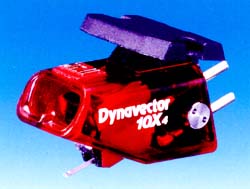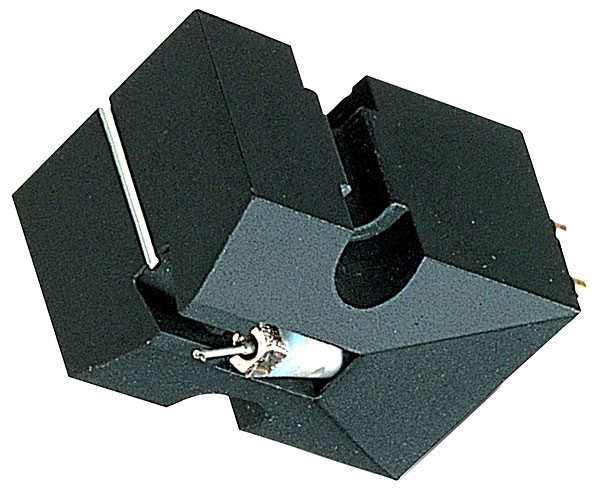The Amplification and Recording Company of Cambridge (A&R Cambridge, later ARCAM) began work on a line of high-quality inexpensive moving magnet cartridges not long after introducing its award-winning A60 integrated amplifier. The P77, which cost £45 in 1977 and featured a (then) trendy parabolic (extended line contact) stylus, was the first to reach retailers. The £20 C77 followed, with the same cartridge body but a less expensive conical (spherical) diamond, and the £35 E77 with a high-quality elliptical stylus assembly. Red (C), blue (E), and black were the chosen colors (P). Each cartridge had a variable tracking weight, ranging from 2.5 grams for the C77 to 1.8 grams for the P77.
The cartridge’s body, cantilever, and generator assembly were all made in Japan. If you were the kind to overtighten your cartridges in the headshell, the former was easily broken. Arcam released a Magnesium-bodied model over a decade later, in 1986, for £10 more than the usual pricing, or you could update your existing stylus with a replacement 77Mg body for £23 more. Dr. Ernst Weinz in Germany originally supplied the styli, but after his untimely death, Arcam was able to obtain UK-made diamond styli for the E77 and P77 styli from Expert Pickups, the company that pioneered the elliptical stylus for Decca. “Expert’s diamonds are of the highest quality and are equivalent to any in the world,” stated John Dawson of Arcam.
The Arcam 77 series of cartridges has a great sound. The standard C77 has a huge, warm, fat, powerful sound with minimal finesse, but it tracks well and has a very musical nature. While maintaining the basic big-hearted sound, the E adds a lot of gloss and detail. The bass is a touch tighter, but it still lacks a lot of resolution. The P, on the other hand, is a very detailed, delicate, and fluent performer, and one of the nicest moving magnets of its day. The Mg body gives the fundamental package additional grip and visual solidity, as well as more detail and better dynamics. A C77Mg sounds better in some ways than a P77, but by the time you get to an E77Mg, you’ve got a really nice MM, and the P77Mg is fantastic. The 77 range was smoother and more complex than the competing Shures of the time, as well as more musical and dynamic than the Ortofons. None of them compare to a very excellent, high-end modern magnet, but they are all extremely enjoyable to listen to. Prices are low these days, but styli can still be found if you seek hard enough. It’s something to consider, especially in the Mg variety.







